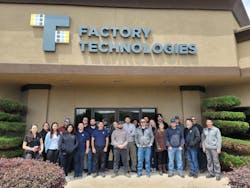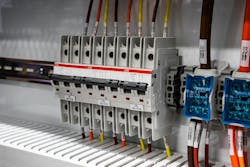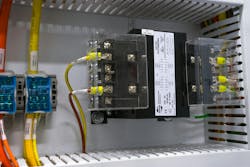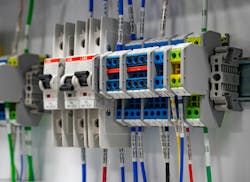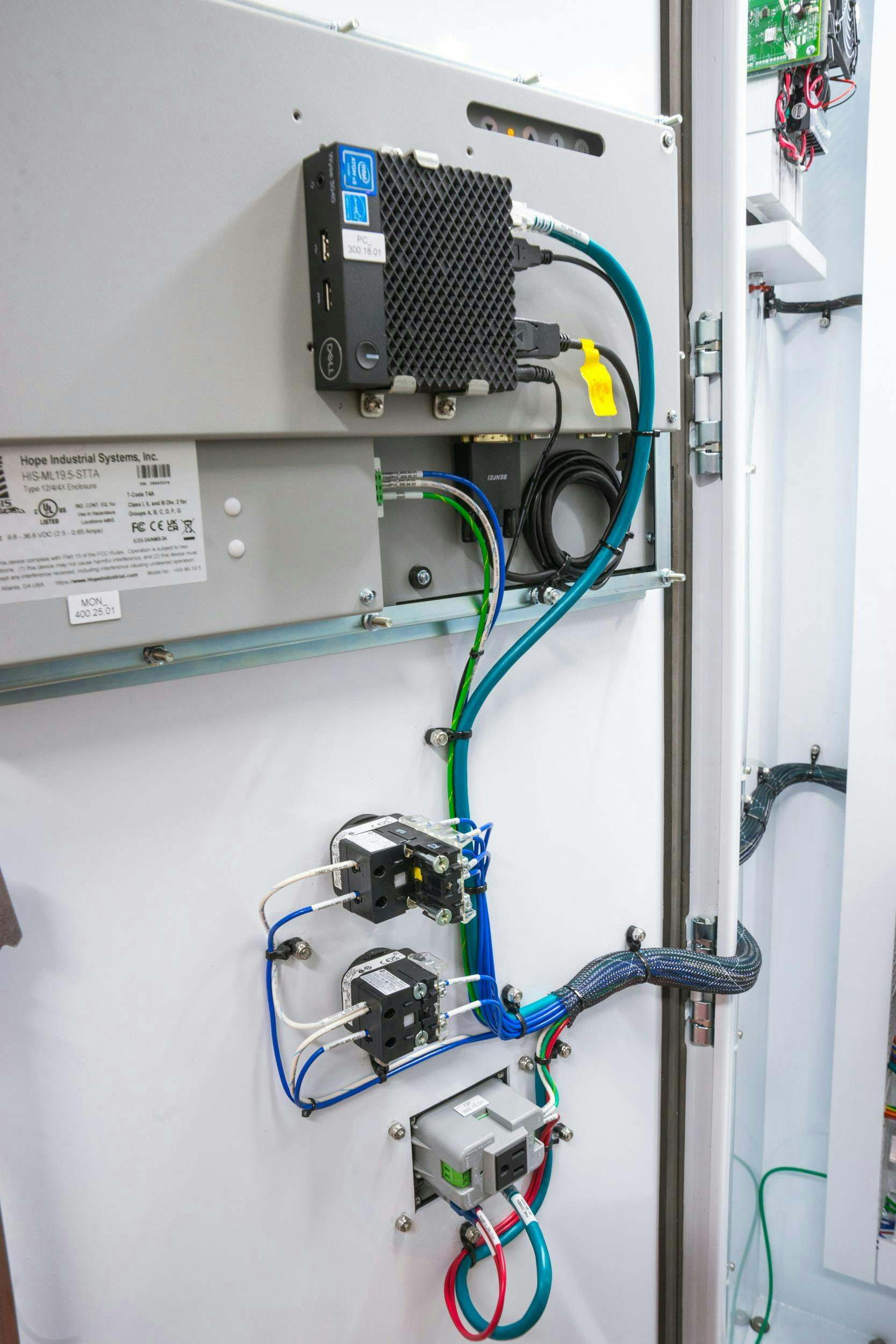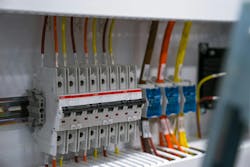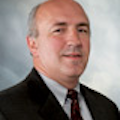How Factory Technologies (FTI) integrates SCADA, edge computing and PLCs
Key Highlights
- Industrial system integrators like FTI provide custom, end-to-end automation solutions, including PLC programming, SCADA/MES/OEE deployment and OT network design.
- Integration projects can be driven by the need to upgrade legacy systems to use smarter, interconnected devices for data collection, sometimes require the use of digital twin software for simulation and often rely on customer-dictated components.
- System integration extends beyond initial commissioning to include long-term services like 24/7 remote support, advanced data utilization via edge computing and developing predictive maintenance applications to minimize customer downtime.
A member of the Control System Integrators Association (CSIA), Modesto, California-based Factory Technologies (FTI) was founded in 2014. With the majority of its 25 employees being electrical or mechanical engineers, almost all of the work it undertakes are custom integration projects. “We provide services nationally, offering both on-site support and remote VPN support,” explains FTI President Jared Hoefle. In California, Factory Technologies provides full-service support in the diverse food and beverage industries throughout the state. “We make complex factories efficient, stable and straightforward to operate, so the client can protect their bottom line,” adds Hoefle, who answered a few questions about FTI (Figure 1).
Describe the machines you integrate. How many machines do you integrate on average each year?
Jared Hoefle, president, Factory Technologies: I’d estimate 50 per year; we average one per week. FTI’s primary business is the food and beverage industry. As such, typical equipment would include fillers, filtration skids, presses, CIP processing, tank storage/fermentation, refrigeration, wastewater lift stations, palletizers, cartoners, cappers and utility monitoring.
Highlight some of your most innovative machine integrations. What makes them unique?
Jared Hoefle, president, Factory Technologies: Factory Technologies is particularly proud of a large greenfield bottling facility where we were the primary integrator. This integration included the design/development/deployment of a facility-wide Inductive Automation Ignition system. This application evolved from a traditional supervisory control and data acquisition (SCADA) system to include live camera feeds, regulatory agency reporting, manufacturing execution system (MES)/overall equipment effectiveness (OEE) tracking, energy management and lot/batch control. We upgraded, designed and rebuilt the facility-wide OT network to incorporate all aspects of the operations with the new Ignition system. Finally, as the primary integrator on this project, we completed traditional programmable logic controller (PLC) programming/commissioning to integrate OEM machine centers into functional processing lines.
What is your core business? What industries do you work in? What type of manufacturers do you work with?
Jared Hoefle, president, Factory Technologies: Our core business is system integration, specializing in industrial automation and control systems. Due to our location in California’s Central Valley, we primarily work in the food and beverage industry—wine, dairy, cheese, juices, syrups, tomatoes, rice, vegetables, almonds, walnuts—yet we also provide automation solutions for refrigeration, water/wastewater, rock quarries, chemical plants, feed mills, utilities and canals.
What are the important trends affecting the industries you work with and the types of machines you integrate?
Jared Hoefle, president, Factory Technologies: In the food and beverage industry, our customers are looking for flexible solutions which allow them to scale their production needs and adapt to market demands (Figure 2). Additionally, we have many clients wanting to migrate legacy systems with traditional hardwired I/O to more modern and smarter interconnected devices to collect data.
How much time does it typically take to go from the design stage to installation on a typical machine? Do you have other projects that vary?
Jared Hoefle, president, Factory Technologies: We have projects that take half a day and projects that take two years. The average project goes from design to installation in eight to 12 weeks (Figure 3).
How do you use digital twin software or other technology for the design process?
Jared Hoefle, president, Factory Technologies: We utilize both SCADA and PLC digital twin software to simulate field conditions without having physical hardware available. When hardware is available, such as on a project with new panels/hardware/servers, we’ll bench test the applications with the project’s physical hardware. However, many projects are add-ons to existing processes, where physically testing the hardware is not possible. In these cases, utilizing a digital twin is the best option for simulating site conditions.
What are your supplier preferences and why? How does each component type and/or its technology enhance your machines? What technology trends are driving design? How often do you rely on customers to dictate component choice?
Jared Hoefle, president, Factory Technologies: Our clients dictate component choice about 75% of the time (Figure 4).
Control: We tend to stick with client selection of controllers, which in California’s Central Valley typically means Allen-Bradley by Rockwell Automation. We do also support Siemens, Omron, Schneider Electric and ABB. We are seeing an increase of CoDeSys controllers on stand-alone skids, such as ifm Efector, Wago and Opto 22.
Motion: Allen-Bradley by Rockwell Automation. For pneumatics, it’s SMC.
Sensing: ifm Efector, Emerson, Endress+Hauser, VEGA, Allen-Bradley by Rockwell Automation.
Connections: ifm Efector and Allen-Bradley by Rockwell Automation.
Enclosures: nVent Hoffman, Saginaw Control and Engineering and Rittal.
Displays: Hope Industrial, OnLogic, Allen-Bradley by Rockwell Automation and C-more industrial displays, which are distributed by AutomationDirect.
Safety components: Safety processors with Flex 5000 Safety I/O from Allen-Bradley by Rockwell Automation.
Get your subscription to Control Design’s daily newsletter.
How does data enhance your machine integration? Do you integrate machines that use edge computing? Do you integrate remote connectivity to machines? How do the machines you work with use analytics?
Jared Hoefle, president, Factory Technologies: Most of our clients utilize on-premise edge computing for their SCADA/MES/OEE solutions. These clients typically have robust OT networks, so VPN connections to their systems allow secure remote access. Food-and-beverage clients have stringent reporting requirements on the data being obtained from our machine integration.
What is required for typical maintenance on the machines you work with? How do end users limit downtime?
Jared Hoefle, president, Factory Technologies: We have service contracts to provide 24/7 remote support for our clients. Additionally, we have developed an Ignition application for our clients to track maintenance assets through the lifecycle. Users can track device incidents and downtime reasons or set predictive maintenance triggers.
Please detail any other products or services you manufacture or offer in addition to system integration.
Jared Hoefle, president, Factory Technologies: Calibration services, control panel design, UL 508A and UL 698 control panel builds, electrical engineering, process consulting and project management (Figure 5).
Please highlight a recent customer integration project with innovative design. How did it help this customer achieve better production or quality?
Jared Hoefle, president, Factory Technologies: In a recent project we leveraged Ignition to create an innovative design at a chemical mixing facility. The application allows operations to build and manage recipes. By integrating Ignition with the PLC, the system automatically sends the updated recipe data to the PLC for a particular batch. The PLC is then able to determine the path to the mixing tank, and it allows for precise batching as it monitors flow in real time while batching to ensure the correct amounts of chemical are added. This approach not only eliminated the need for manual recipe adjustments, reducing the potential for human error, but also provided real-time monitoring and control of the chemical mixing process. As a result, the customer experienced enhanced production efficiency, consistent product quality and the flexibility to scale operations while maintaining precise control over each batch. This dynamic integration significantly improved both operational efficiency and product consistency, enabling the customer to meet high-quality standards while increasing throughput.
About the Author
Mike Bacidore
Editor in Chief
Mike Bacidore is chief editor of Control Design and has been an integral part of the Endeavor Business Media editorial team since 2007. Previously, he was editorial director at Hughes Communications and a portfolio manager of the human resources and labor law areas at Wolters Kluwer. Bacidore holds a BA from the University of Illinois and an MBA from Lake Forest Graduate School of Management. He is an award-winning columnist, earning multiple regional and national awards from the American Society of Business Publication Editors. He may be reached at [email protected]

Leaders relevant to this article:
